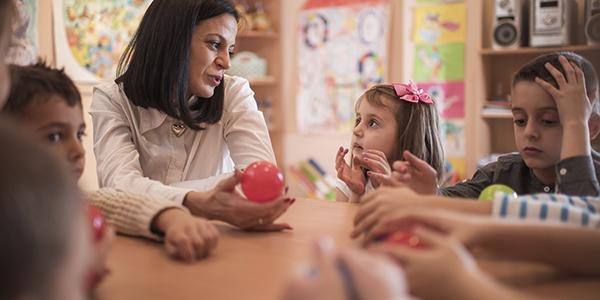Welcoming Dual Language Learners

You are here
It's important for teachers to create a welcoming environment for children and families from all cultures and who speak different languages. Here are a few quick tips to make great beginnings for young dual language learners (DLLs):
-
Find out what languages will be spoken by children in your class and focus your classroom setup on what will most effectively support children who speak those languages.
-
Stock bookshelves with bilingual and monolingual books in each of the languages needed. Look for storybooks and nonfiction books that come with CDs or books available as apps with sound to help you learn to pronounce words in each child's language. Wordless books are also great for multilingual classes.
-
Ask families to send in photos of things that are meaningful to each child, such as foods, celebrations, and family activities. Ask them to help you label the images with words in both English and the home language to give you lots to talk about with the children. Use the pictures to make personalized posters, displays, and class books that children can relate to.
-
Add labels that reflect the represented languages. Ask families or volunteers to help with the proper and the phonetic spelling. Labels don't build language and literacy unless you and the children really use them.
-
Play music from different countries and in different languages. Ask families to send in their favorites to build that home-school connection.
-
Learn to say 10 to 20 key words in each child's home language to help them feel welcome, safe, and comfortable starting from their first day. Use an online translation app like Google Translate or ask parents to record words for you to learn. Try hello, my name is, eat, drink, hurt, bathroom, your parents will be here soon, wash your hands, help, yes, and no to start.
-
Make a picture communication board to help all children communicate their needs and feelings. Post photos of the children looking sad and happy, helping each other, cleaning up toys, going outside, solving a conflict, and participating in daily routines.
Photograph © iStock